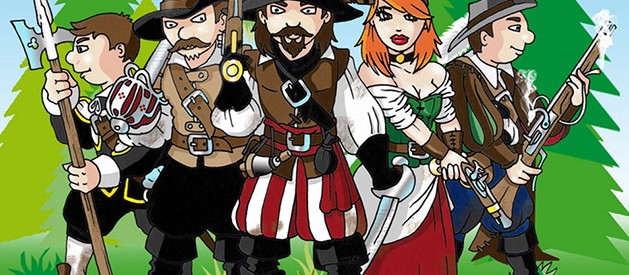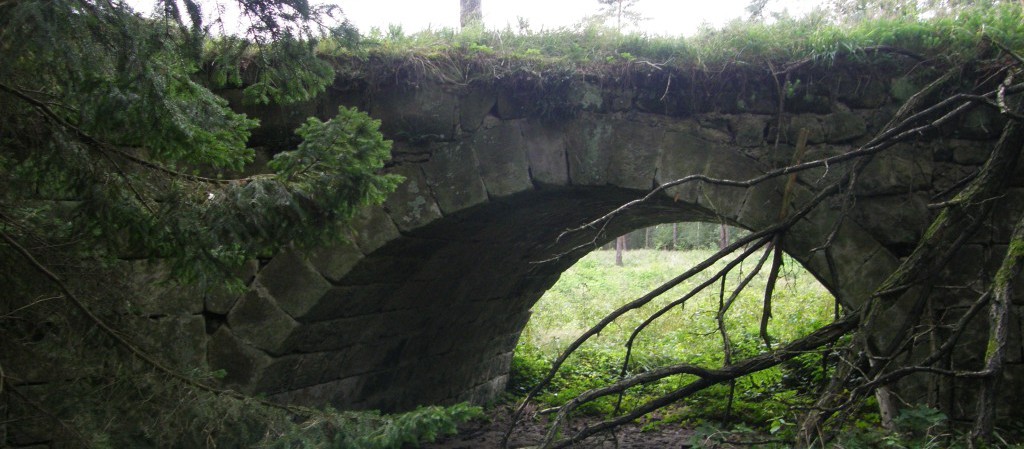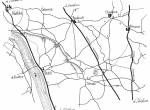
The educational journey of the robber Stetka
A nature trail around the surroundings of Štětí for the whole family, introducing the history and picturesque nature, industry and agriculture of Štetsko. The legendary robber Štětka and his four-member team are guiding the tour, giving information on a marked circuit starting from
In the old days of the Thirty Years' War, the robber Štětka was the master of the deep forests, fields and hillsides around the town of Štětí. Today, his home is the former Mordloch Cave, hidden away from people in the middle of the Stračen forests. Who knows him in the region. He protects the poor and honest, and justly punishes dishonesty and avarice. He has walked this land many times. He knows every road and footpath here.
During your adventurous journey with the robber Stetka you will come across educational boards that will tell you all about the history, nature, fauna and flora, industry and agriculture of the local region or visit the mythical cave Mordloch of the robber Stetka. You can also try out a discovery competition Following the footsteps of the robbers or robber geocaching.
Stops

Brocenská cesta
THE IMPORTANCE AND HISTORY OF THE ORIGINAL ROADS OF THE REGION OF STETTIN
Important routes in the Stettin region
Štětí has never been an important town in its history and this was reflected in the fact that the most important roads passed by the town. The road that today climbs the Hoštes Hill is known from ancient times, but only as a pedestrian path. Due to the steepness of the slope, it could not be used for wagon traffic. Moreover, the town of Štětí lacked a stone or wooden bridge and the local ford was not a reliable crossing point due to the volatility of the Elbe River. A ferry did operate here, but traders preferred other, more reliable routes. A number of footpaths and dirt tracks led from the town to all the surrounding villages. Along the Elbe River to Počeplice, to Stračí, past the town's gallows to Čakovice and Radoun, or through the village to Chcebuze. But these were only roads and paths of local importance.
From time immemorial, the so-called "Snědovice road" was an important route that led from Mělník, through Liběchov, which was the seat of the manor, past today's Count's and Marian chapels, to Radoun. Here the road split, one branch led to Snědovice, which was also the seat of a rather large estate, the other branch continued from Radouna through Čakovice to Hoštka.
Hoštka had the advantage in earlier times that an important trade route ran through it, the Lusatian route. Another relatively important and significant route was the so-called Brocenská cesta, which also led from Liběchov, but continued on to Brocno, where it ended at the local castle.
History of travel
The earliest roads were near watercourses, where the terrain allowed for pedestrians, horse riders, single-axle carriages, four-wheeled carriages and eventually carriages with a swivel front axle. Routes were chosen through natural, poorly maintained terrain, across plains, along steep artificially created drifts and along watercourses. Ditches were a late invention. The terrain was reinforced with wooden huts, stone fills in the wetlands and the routes were routed through very wide passages. The width of the passes was chosen at pistol range to improve passenger defence. Safety was guaranteed by the local authority. Before the establishment of the high authorities, the security of the castle and after the Thirty Years' War was ensured by military guards. The quality of the roads grew only very slowly; with the development of trade in the 15th and 16th centuries, pressure to improve the traffic situation grew, and the trails expanded into country roads, but with a still poor surface. Essentially rutted strips of land occasionally paved with huts, twigs or, exceptionally, stones in dry weather, they turned into a quagmire when it rained.
Loaded wagons were easy targets for the robbers - lucky was the survivor. Travel was by wagons (merchant's), carts, porters with cargo on their backs, soumars (horses and mules) with cargo saddles, as well as wheelbarrows, lifts and wheelbarrows, and in winter by sleigh. Travel was often uncomfortable, the carts were shaky and the speed was not great either. From the 14th century onwards, messengers on horseback or on foot were the usual accompaniment. Armed in pairs, they had free accommodation in trading stations with the right to fresh horses. Only the monarch or a prominent nobleman, as well as towns and the church, maintained their own messengers. Apart from the official messengers also merchants, craftsmen, journeymen, wandering monks and students and other travellers.
Crosses and St. Mary's crosses by the roadside
Often the cross was erected out of grief or respect for the person who died at the site, whether by natural or violent death. However, the cross did not always necessarily mean that a death had occurred at the site; sometimes it was erected precisely because, for example, an accident that occurred at the site was fortunate.
Often the cross was erected at the place where a crime had been committed. Most often, so-called atonement crosses were placed in such places. Their atoning significance is linked to the need to build a memorial to the dead. A large number of these crosses were built by contract. Already in the Middle Ages, when the law of atonement was in force, it was the duty of the person who had a crime on his conscience to atone for it. Moreover, a contract of reconciliation protected the perpetrator from possible retribution. It obliged them to perform various duties, among them to have a mass celebrated for the deceased and to have a stone cross carved and erected. These crosses are carved from a single piece of stone and often have inscriptions, years or other markers carved on them. They have been seen since the late Gothic period.
Apart from the reconciliation crosses, other types of small sacral architecture can be found in the landscape. These include crosses made up of a stone base and a metal or stone cross, divine torments, niche chapels, free-standing statues, bell towers and then also less preserved wooden crosses. The origin of these objects, unlike the reconciliation crosses, was not so clear-cut.
The crosses used to be wooden, but since wood is easily affected by nature, they had to be renewed more often. Therefore, later, from about the 18th century onwards, stone became the most common material for crosses. The use of cast iron also gradually increased, at first only the body of Christ was cast from it, and later the whole cross. Even now, however, we can see crosses made of wood, restored according to folk stories. These crosses may also have a metal figure of Christ on them, or a sign with a year marking the date of creation.


